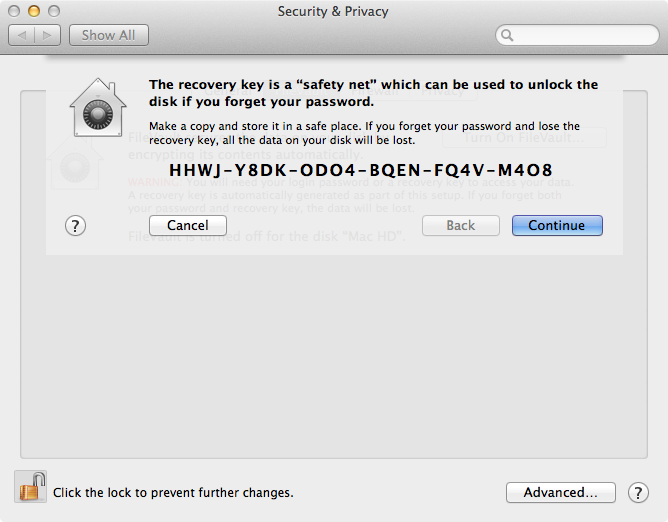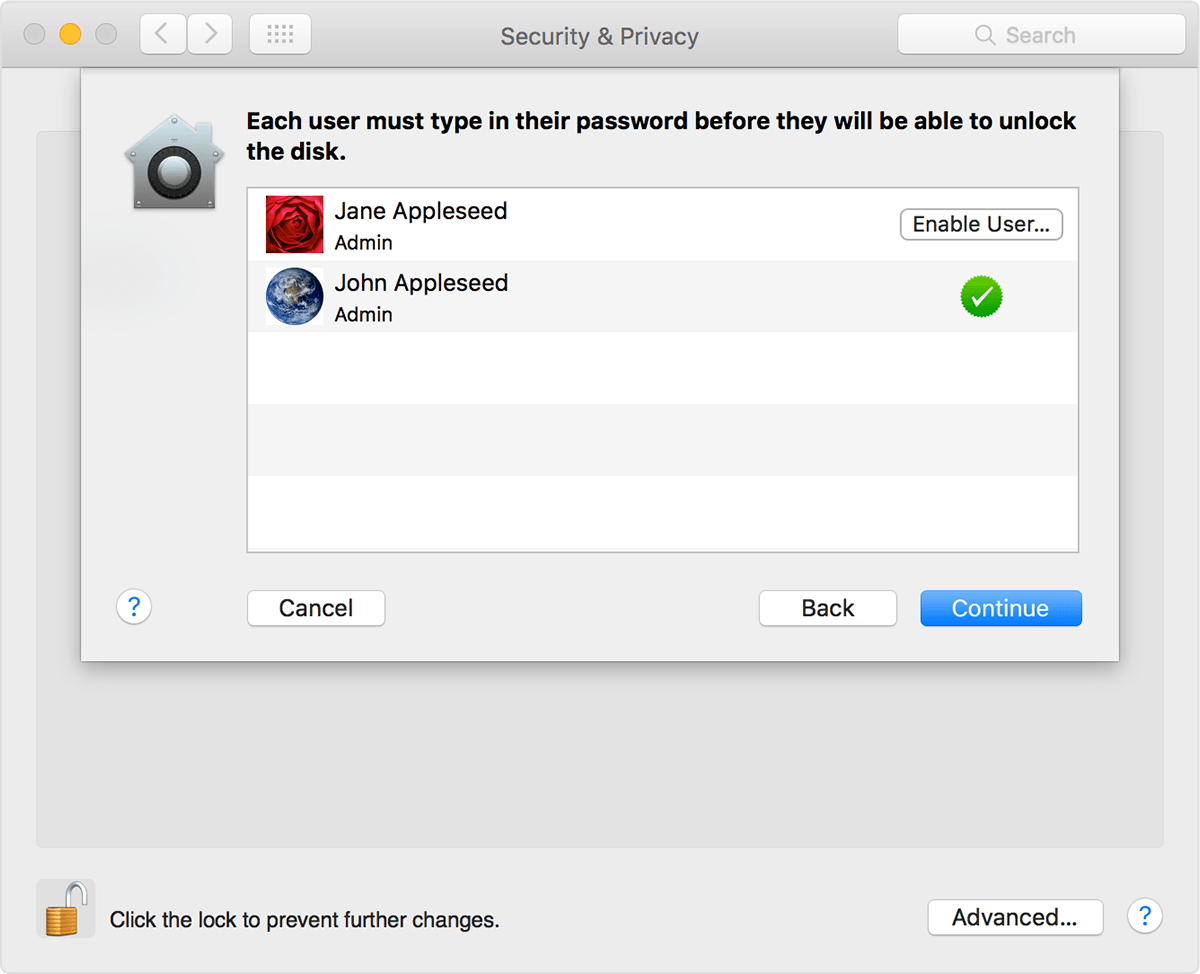
| Uploader: | Shakajin |
| Date Added: | 28 July 2005 |
| File Size: | 41.84 Mb |
| Operating Systems: | Windows NT/2000/XP/2003/2003/7/8/10 MacOS 10/X |
| Downloads: | 71985 |
| Price: | Free* [*Free Regsitration Required] |
FileVault 2 Institutional Recovery Keys – Creation, Deployment and Use | Der Flounder
Without this recovery key, losing your password is equivalent to losing all your data. Assuming you previously unlocked the FileVaultMaster. To check if an institutional recovery key is in use, run the following command:.
It is also possible to include the public key data in a plist file, which allows the use of a plist to set up the institutional recovery key.
Even if you use Boot Camp, compatibility is not guaranteed. I'm sure they have a backdoor in place for NSA and other 3 letter agencies.
FileVault Failed. The given disk is in us… - Apple Community
A bit more testing using diskutil to compare the status of the recovery and boot volumes before and after trying to enable FileVault suggests that the boot volume is somehow becoming damaged when I try to enable FileVault through System Preferences when FileVaultMaster.
Once the recovery keys are removed, the only way to unlock the FileVault 2 encryption is by using the password of an enabled cilevault. Which are you using? However, the easiest way I have found to do it is to encrypt the machine before with the local admin account, copy i key down and store it on our server in a simple list only IT personnel have access to.
We have had Macs that have failed or needed to be recovered, but in each case, so long as the local admin account itself has access to the disk, it has been able to do what needs to be done.

Sign up or log gvien Sign up using Google. To create a FileVaultMaster. You can remove recovery keys using fdesetup removerecovery. Uae it a technical requirement that the FileVaultMaster. I first suspected a problem with the recovery partition restored during the DeployStudio workflow, but I think I've ruled out this possibility: Your email address will not be published.
I encountered a new scenario where the system hangs for a few seconds after clicking 'Continue' to enable FileVault, then reboots without presenting one of the three error os described in my original post and begins encryption, but still without having presented the pane to select users to unlock the disk. Once imported, fdesetup will automatically create a FileVaultMaster.
Next, make several copies of the FileVaultMaster. Select the public key in the FileVaultMaster keychain.
DeployStudio Forum
I then copied the modified keychain to a Mac with a fresh install of Yosemite, and s I clicked Continue, the Mac reboots nearly right away. I guess the VMware falls into the 'older' category Last edited by mjsanders This approach has worked well in my environment for the past few years; we're a DeployStudio shop and typically include the FileVaultMaster.
This is the reason why you needed to set the Master Password before encrypting and why it was also important to use the same FileVaultMaster.

If you ever forget your regular password, this will be the back-up key. In case recovery is needed, either recovery key will work to unlock or decrypt the encrypted drive.
Using FileVault
If you have a new institutional public key available as a DER encoded certificate file, you can run the following command to replace the current institutional key:. If an institutional keychain is being used on this Mac, you will see a message that an existing FileVault Master keychain was found and moved.
KeychainPath KeychainPassword For KeychainPathyou will need to provide the file path to the keychain as the plist value. I can boot into recovery dsk, open the keychain from a usb drive and run the unlockVolume command, and the volume is readable.
If you have a keychain file containing the private key for the current institutional key available, you can run the following command to remove the current institutional key: Exec format error I can repair Macintosh HD, but it apparently becomes damaged again on subsequent attempts to enable FileVault.

The public key will need to be available as a DER encoded. When provided, the keychain will be created and will contain both the private and public keys needed for recovering a FileVault 2-encrypted drive that uses this institutional recovery key.
You are commenting using your Facebook account.

Comments
Post a Comment